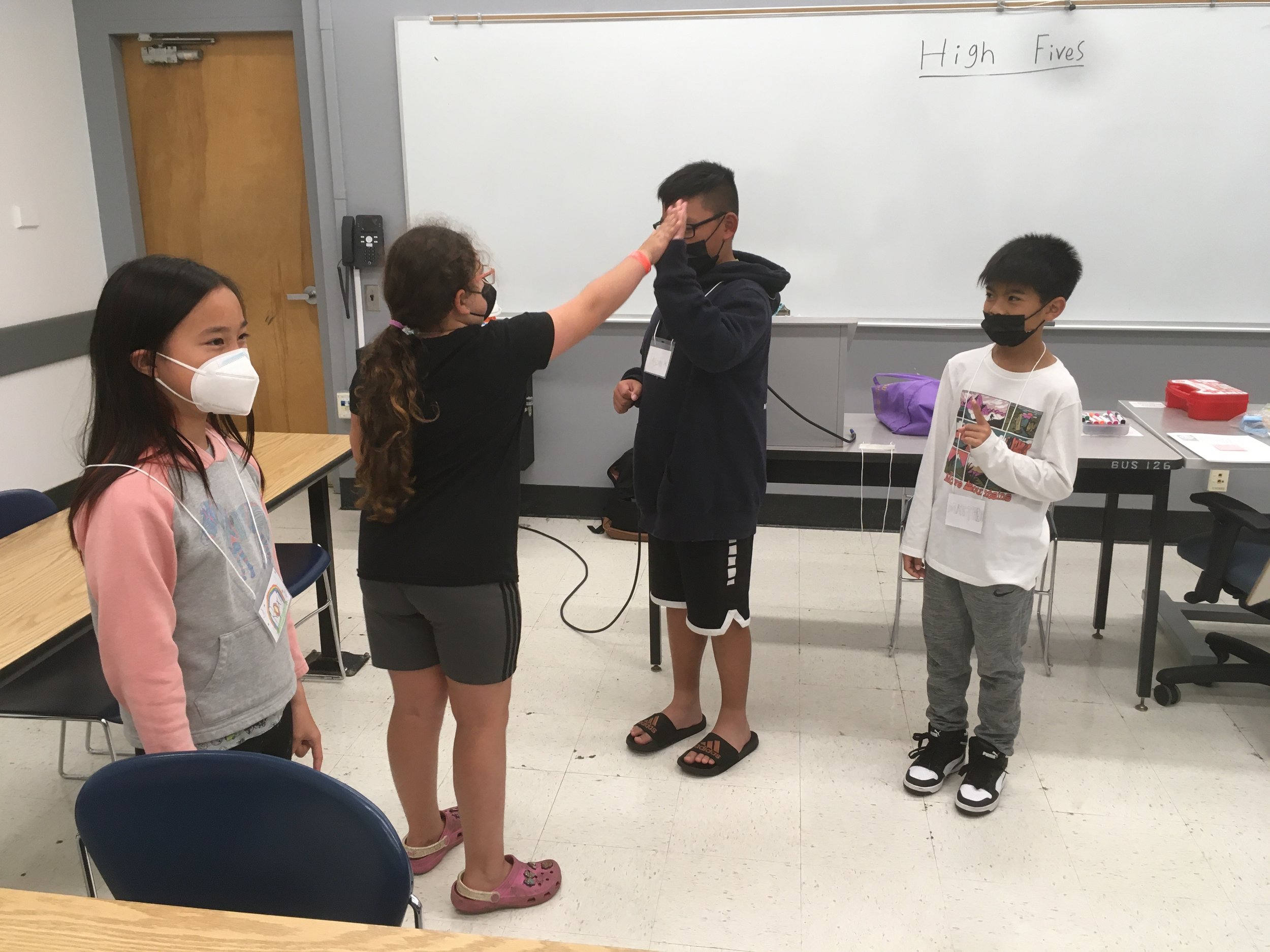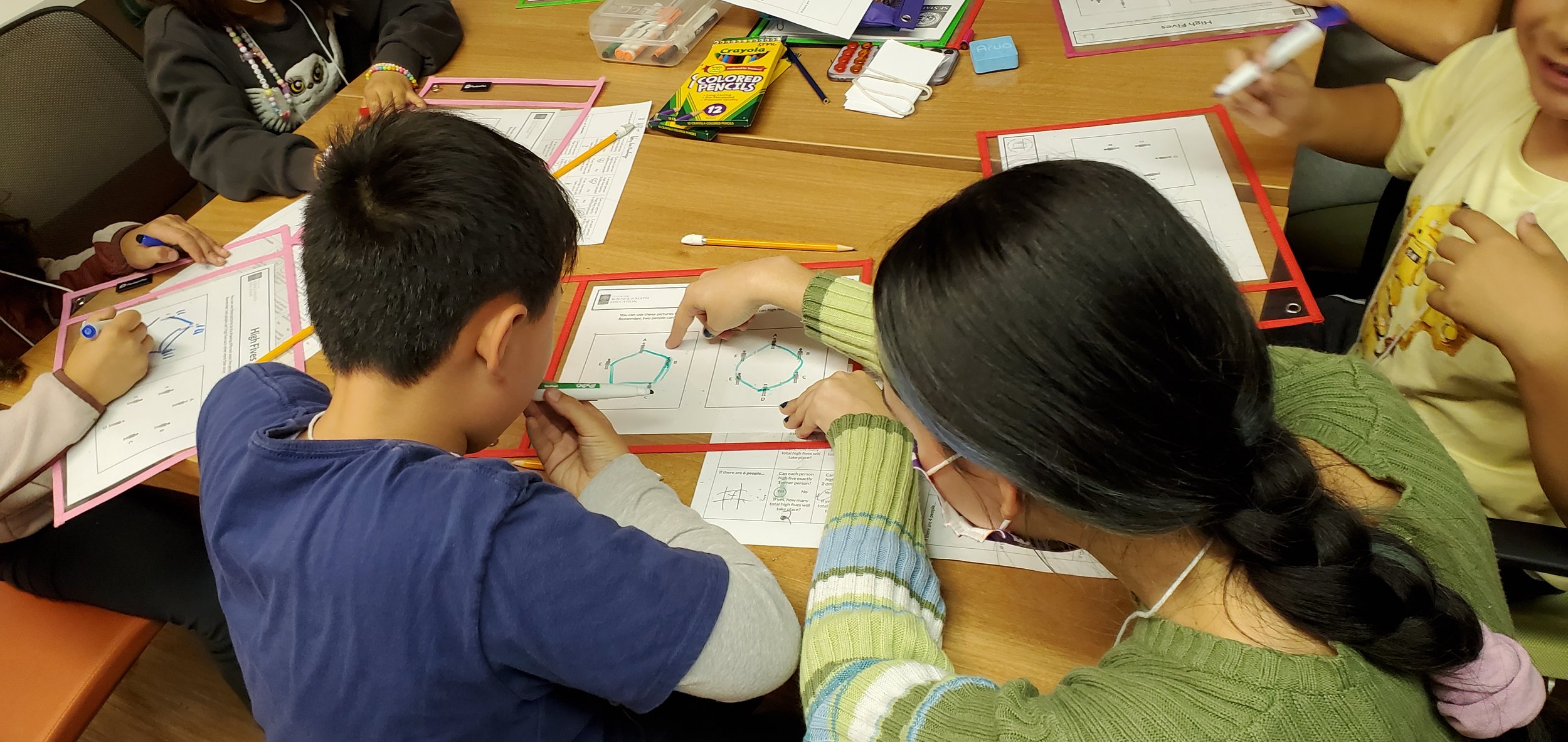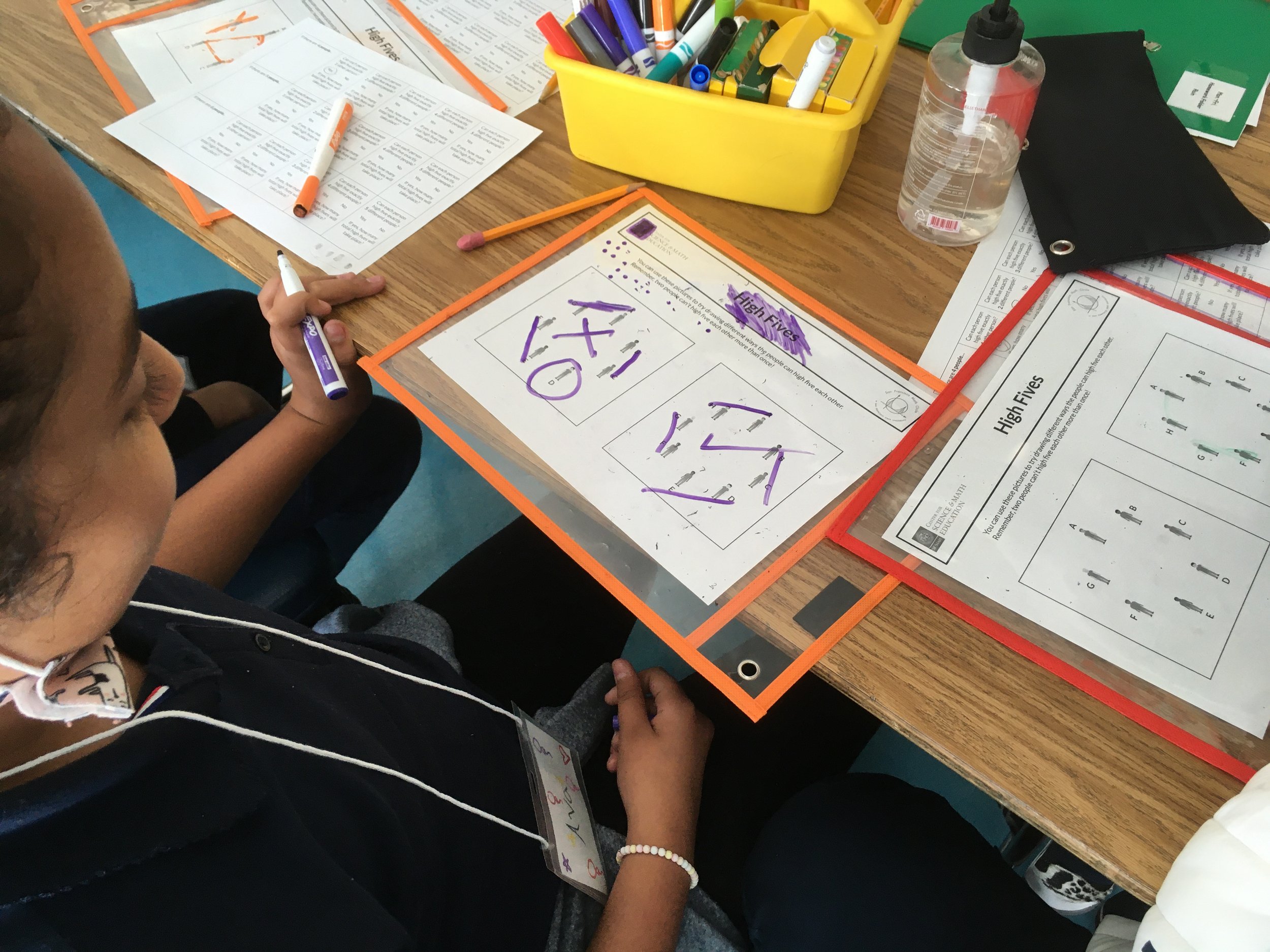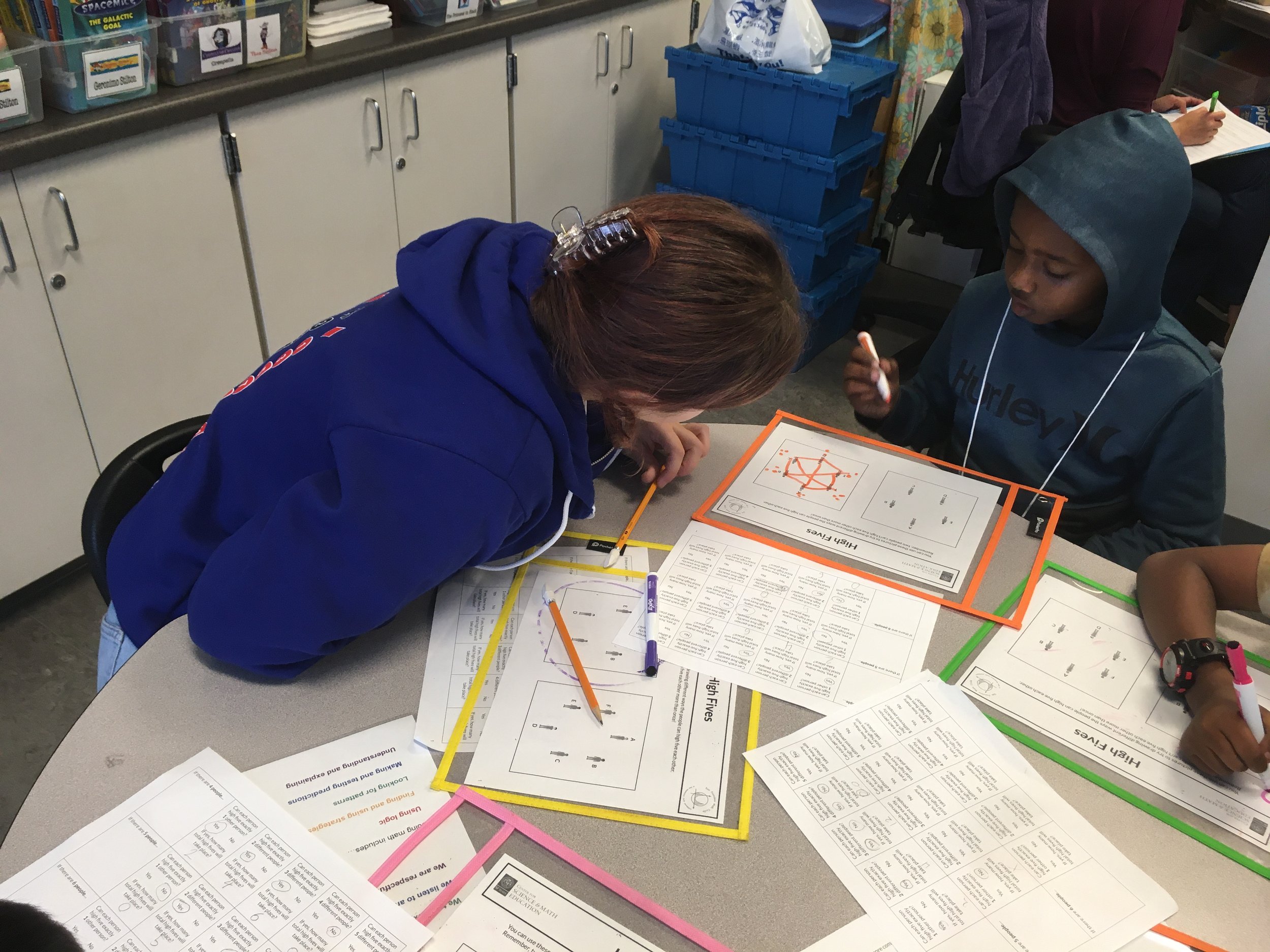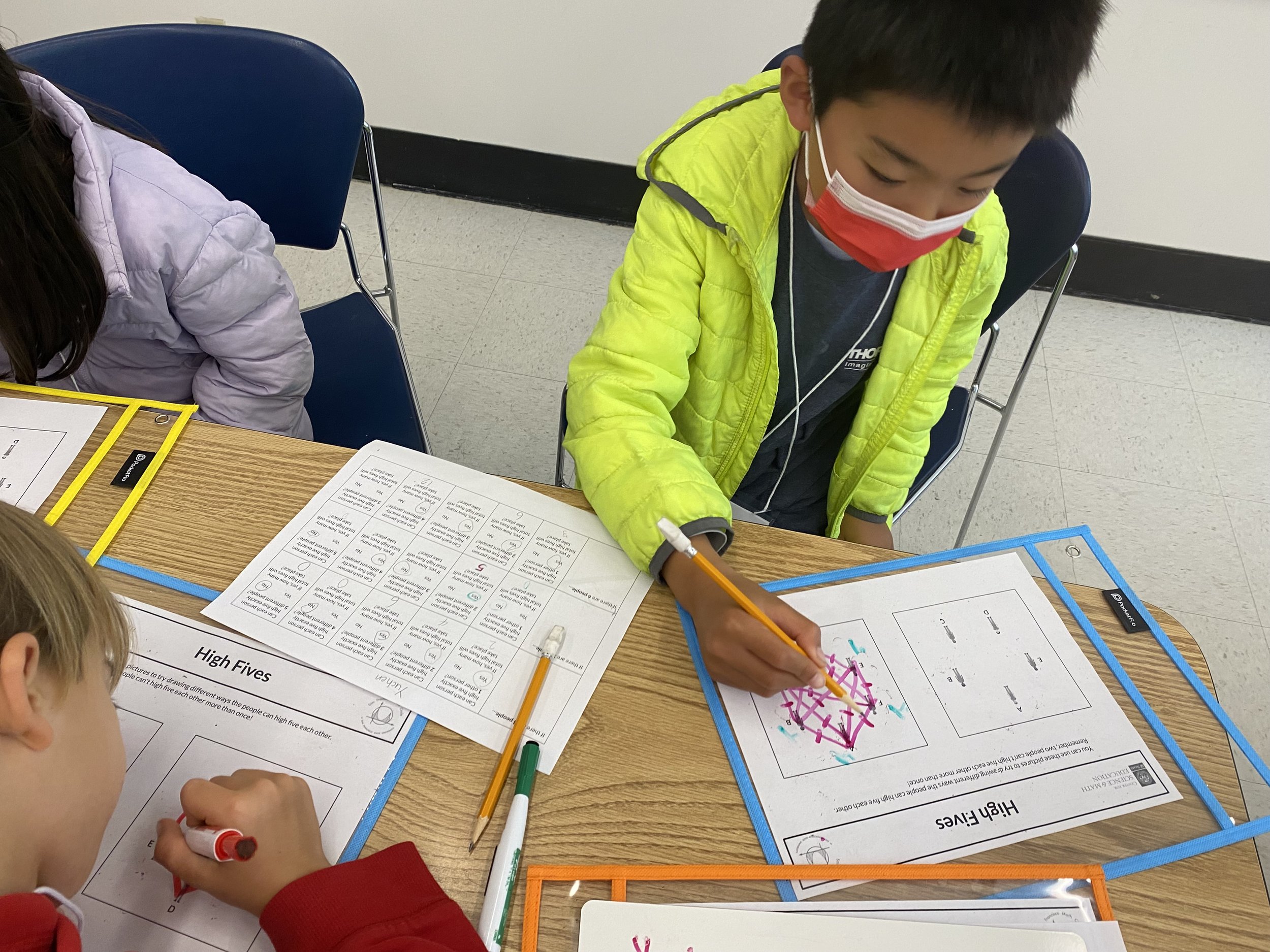High Fives
How it works
Imagine you're hanging out with some of your friends. Can you and your friends high five with each other so each person high fives exactly one other person? How about exactly two other people? Exactly three other people? Do your answers depend on how many of you there are?
In this activity, students try to coordinate high fives between people so each person high fives the same number of people. They explore doing this with different numbers of people and different numbers of high fives per person. They try to develop rules to help them predict when this will and won't be possible, as well as how many total high fives will occur when it is possible.
Why we like this activity
- It’s fun! Students enjoy trying to solve the various challenges.
- It helps students develop numerical reasoning.
It requires students to engage in mathematical habits of mind:
Making observations / comparing and contrasting / looking for patterns / making and testing predictions / finding and using strategies / understanding and explaining when trying to figure out whether or not it's possible to solve different high five challenges.
Making observations / comparing and contrasting / looking for patterns / making and testing predictions / finding and using strategies / understanding and explaining when trying to figure out how many total high fives will take place for different high five challenges.
- It has a low floor and a high ceiling: It's easy for students to start exploring by trial and error, but coming up with rules that help to predict when you will and won't be able to get everyone to high five the right number of people and how many high fives will take place is more challenging.


